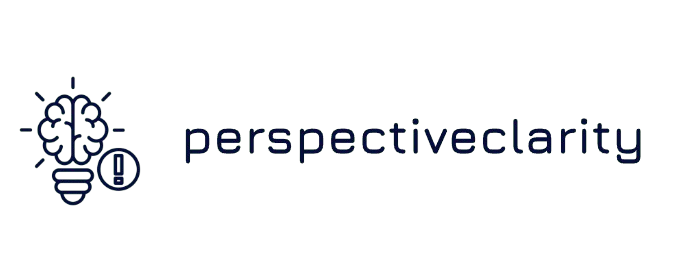The Best Fluffy Pancakes recipe you will fall in love with. Full of tips and tricks to help you make the best pancakes.

Ever watched a toddler learn to walk? One moment they’re wobbling like a drunken penguin, and the next they’re sprinting across the room. This amusing spectacle highlights a fascinating phenomenon: the learning curve. But what happens when productivity enters the picture? Spoiler alert: the curve takes a nosedive, and it’s not just because everyone’s too busy scrolling through cat videos.
Why Does the Learning Curve Go Down When Productivity Is Considered?
The learning curve represents the relationship between learning and productivity over time. Understanding this concept provides insights into how individuals and organizations can improve efficiency and outcomes.
Definition of the Learning Curve
The learning curve illustrates how productivity increases with experience. Typically, as a person or organization gains experience in a task, the time taken to complete that task decreases. This concept can be quantified. For instance, studies show that productivity might improve by 10-20% each time output doubles. The learning curve emphasizes that initial productivity gains are often steep before tapering off over time.
Historical Context
Historically, the learning curve stems from World War II innovations when factories sought ways to optimize production. Research conducted during this period demonstrated that repetition led to enhanced efficiency. Pioneering studies by Wright in 1936 revealed a consistent relationship between output and labor hours. Over decades, this framework evolved, significantly impacting manufacturing and education disciplines. Notably, organizations began applying learning curve principles to estimate costs and set performance benchmarks.
Factors Influencing Productivity

Productivity depends on various interconnected factors that shape the learning curve. Understanding these elements helps in grasping why productivity may decline as individuals navigate their learning journey.
Role of Experience
Experience plays a crucial role in shaping productivity. As individuals engage in a task repeatedly, they develop insights and skills that streamline their performance. Repeated efforts reduce the time needed to complete tasks. For instance, studies show that output may improve by 10-20% with every output doubling. This consistent enhancement results from both increased familiarity and the ability to identify efficient methods. Individuals often find that the more they practice, the easier it becomes, allowing for increased confidence and speed.
Impact of Training and Education
Training and education significantly influence productivity levels. Structured programs help individuals acquire necessary skills more effectively. Quality training can lead to a rapid increase in efficiency, sharpening abilities that translate to improved performance. Organizations providing ongoing education enable employees to adapt to new technologies and methodologies. Research indicates that companies investing in employee training often experience up to 24% higher productivity rates. Training prepares individuals not only to master tasks but also to innovate in their approaches, contributing positively to overall output.
The Relationship Between Learning Curve and Productivity
The learning curve closely ties to productivity increases as experience accumulates. Productivity often rises significantly during the initial learning phase, leading to noticeable gains in efficiency.
Initial Learning Phase
During the initial learning phase, individuals experience rapid gains in productivity. They grasp new concepts and techniques quickly, which contributes to shorter completion times for tasks. Studies show that productivity can increase by 10-20% every time output doubles. Skills develop swiftly, and familiarity with tasks enhances overall performance. For instance, new employees may find themselves completing assignments faster as they refine their techniques. Structured training programs further accelerate this process, as they equip individuals with tailored knowledge and practical skills. As a result, measurable improvements become evident throughout the early stages of learning.
Continued Improvement Over Time
Continued improvement over time emphasizes the importance of practice and experience. As individuals engage repeatedly in tasks, they optimize their methods, reducing the need for effort while increasing results. Productivity gains may taper off but remain significant; organizations often report up to a 24% increase through effective employee training. Insights developed through repetition lead to the ability to identify shortcuts and more efficient workflows. Furthermore, adapting to evolving technologies enhances long-term productivity as individuals integrate skills learned over time. Adopting a continuous improvement mindset enables both workers and organizations to stay competitive in their respective fields.
Implications for Business and Industry
Understanding the implications of the learning curve on productivity offers significant advantages for businesses. Organizations leverage this knowledge to improve operational efficiency and enhance employee performance.
Benefits of the Learning Curve
The learning curve leads to numerous benefits for businesses. Enhanced productivity results from employees becoming adept at tasks through repetition. Companies notice considerable cost reductions, often seeing productivity increase by 10-20% each time output doubles. Enhanced employee morale emerges as staff members feel more competent and valued. Moreover, organizations that effectively harness the learning curve can achieve faster turnaround times, meeting customer demands more promptly.
Strategies for Maximizing Productivity
Organizations can implement specific strategies to maximize productivity benefits from the learning curve. First, providing structured training programs fosters skill acquisition, enabling employees to learn effectively. Ongoing mentorship can also encourage knowledge sharing, leading to increased collaboration among team members. Setting clear performance benchmarks motivates employees to reach targets, reinforcing the connection between experience and productivity. Regular feedback ensures workers understand their progress and areas for improvement.
Efficient Task Completion
Understanding the dynamics of the learning curve in relation to productivity reveals valuable insights for both individuals and organizations. As experience accumulates, productivity tends to increase significantly, allowing for more efficient task completion. However distractions and external factors can hinder this progress, causing the learning curve to decline.
By recognizing these challenges, businesses can implement targeted training and support systems that enhance employee skills and maintain motivation. Emphasizing a culture of continuous improvement ensures that productivity gains remain substantial over time, ultimately leading to greater operational success and employee satisfaction.
